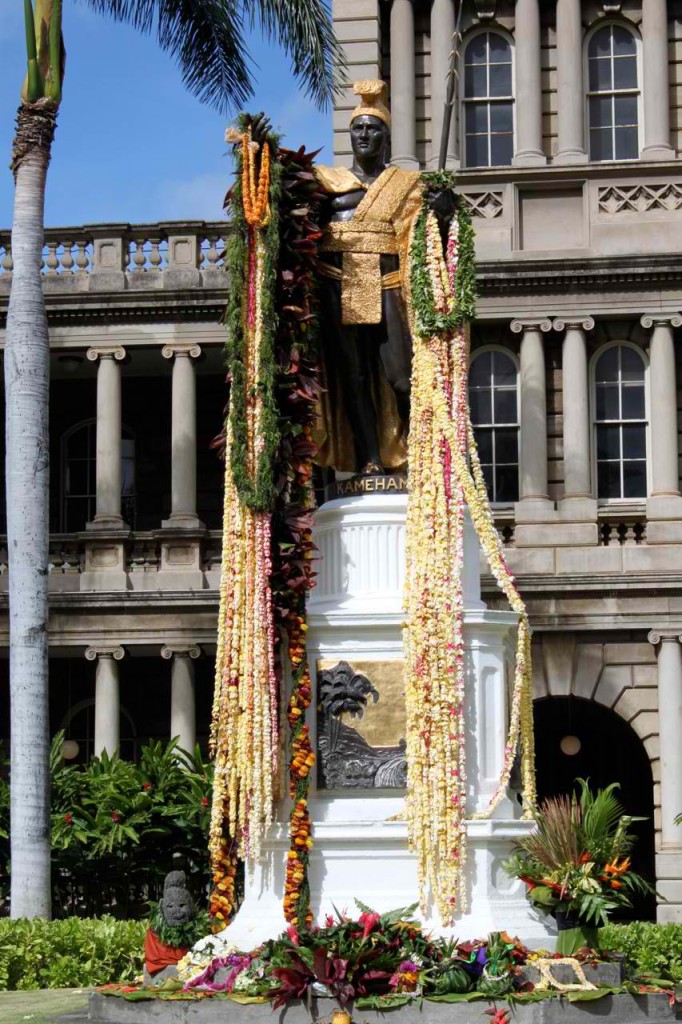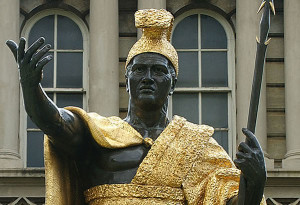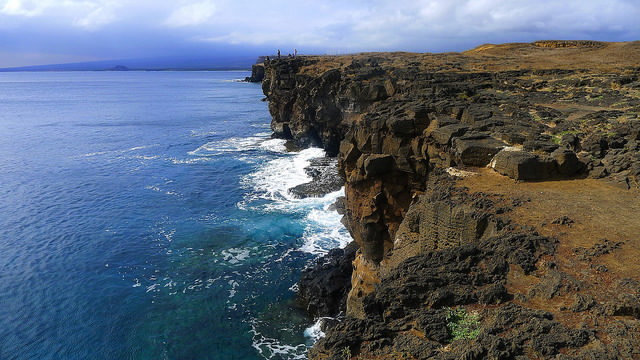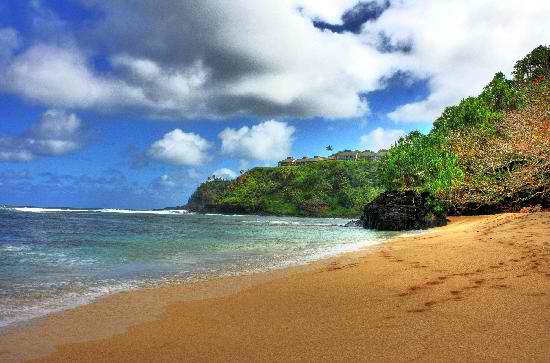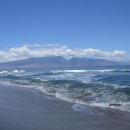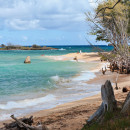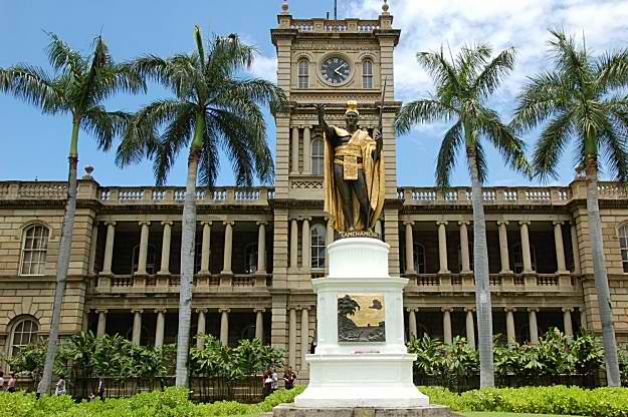 The statue of King Kamehameha the Great, the Hawaiian monarch credited for unifying the islands in the early nineteenth century and establishing the Kingdom of Hawaii in 1810, is probably the most venerated monument in Hawaii. Standing at 8 1/2 feet tall and made from brass painted with lifelike colors, the statue was commissioned by Walter M. Gibson in 1878 to commemorate the 100 year arrival of Captain Cook to the Hawaiian Islands.
The statue of King Kamehameha the Great, the Hawaiian monarch credited for unifying the islands in the early nineteenth century and establishing the Kingdom of Hawaii in 1810, is probably the most venerated monument in Hawaii. Standing at 8 1/2 feet tall and made from brass painted with lifelike colors, the statue was commissioned by Walter M. Gibson in 1878 to commemorate the 100 year arrival of Captain Cook to the Hawaiian Islands.
Gibson, a member of the Hawaiian government, tapped Thomas R. Gould, an American artist living in Italy at the time, to create the statue. Gould completed the plaster model in 1880 which was sent to Paris to be cast in brass. While en-route to Hawaii in 188o, the cargo ship bearing the finished brass sculpture encountered a storm in the south Atlantic and sank near the Falkland Islands. Its entire cargo, including the statue, was presumed lost.
When the news of the shipwreck reached Honolulu, a replica of the statue was immediately commissioned using the original plaster model. However, fishermen managed to recover the sunken statue, which was bought by a British ship captain who then sold it to the Hawaiian government for $875 in 1882. Hawaii ended up with two King Kamehameha the Great statues!
Because of the shipwreck, neither of the statues were available to fulfill Gibson's original plan of unveiling the monument during the celebration of the 100th anniversary of Cook’s arrival to the islands.
After some debate, government officials decided to place the replica, which was in considerably better condition than the original statue that had been damaged in the shipwreck, in the location originally planned to display the monument: at the front of the Ali'iolani Hale government building in Honolulu. This King Kamehameha the Great statue was unveiled during the coronation ceremonies of King Kalākaua in 1883.
The original statue was installed near Kamehameha I’s birthplace in North Kohala.
Both statues depict King Kamehameha the Great holding a spear in his left hand to represent the kingdom’s will to keep harm at bay while his right hand is extended as a warm gesture of aloha. However, critics question the statues' many inaccuracies such as the Roman-like facial features instead of Polynesian, the sash that touches the ground which is considered degrading in native Hawaiian culture, the sandals adorning the statues' feet that are deemed too European, and the open-hand gesture which does not reflect Hawaiian culture at all (beckons are made with the palm down, not the palm up in Hawaii).
Despite all these, the statues, particularly the one in Honolulu, remain some of the most venerated objects in Hawaii. Many Hawaiians consider it a receptacle of mana, or "supernatural or divine power."
During the annual celebration of Kamehameha Day, a two-day feast starting on June 11, various cultural groups, including representatives of each island, travel to the Honolulu sculpture to drape it with leis as a thanksgiving offering.

